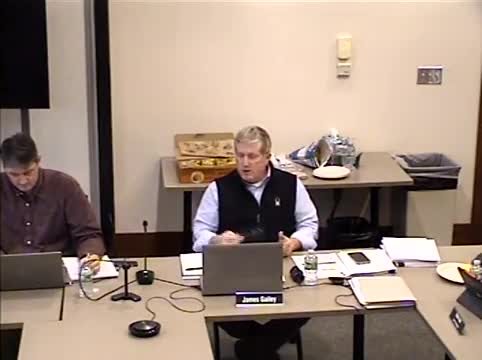Sheriff Joyce discusses department budget and public safety strategies in Maine
February 01, 2024 | Cumberland County, Maine

This article was created by AI summarizing key points discussed. AI makes mistakes, so for full details and context, please refer to the video of the full meeting. Please report any errors so we can fix them. Report an error »

In the heart of Cumberland County, Maine, the Finance Committee convened on January 30, 2024, to discuss pressing budgetary matters, with a spotlight on law enforcement and community safety. The meeting, held in the local government building, was marked by a commitment to transparency and public engagement, as officials invited community members to voice their opinions on the proposed budget.
Sheriff Joyce took center stage, presenting an overview of the sheriff's office operations and the challenges faced in serving a diverse population spread across 836 square miles. With a service population of approximately 54,000, the sheriff's office operates with 68 sworn officers, a number that falls below the recommended ratio of 1.5 officers per 1,000 residents. Joyce emphasized the importance of maintaining high standards, noting that the sheriff's office is one of only three in the state accredited by the American Correctional Association, which requires adherence to rigorous national standards.
The sheriff also highlighted the unique demands of the region, particularly during the summer months when the population swells due to tourism. This seasonal influx complicates law enforcement efforts, as the department must manage increased activity without a corresponding increase in staffing. Joyce detailed the various contracts with towns like Standish and Harrison, which allow for dedicated law enforcement presence, particularly in areas with high seasonal populations.
Budget discussions revealed the sheriff's office's request for nine new vehicles, a critical need to ensure operational efficiency. Joyce explained that the budgeting process involves input from captains and the chief deputy, who compile a wish list that is then reviewed and adjusted based on available funding. The sheriff's office aims to balance the needs of the community with fiscal responsibility, a challenge that resonates deeply in today’s economic climate.
As the meeting progressed, the committee members listened attentively, weighing the sheriff's insights against the backdrop of community safety and resource allocation. The absence of public comments during the meeting indicated a potential disconnect between the community and local governance, raising questions about how to better engage residents in future discussions.
In conclusion, the Finance Committee's meeting underscored the ongoing efforts of Cumberland County to navigate the complexities of law enforcement funding while striving to meet the needs of its residents. As the county prepares for the upcoming budget, the dialogue between officials and the community remains crucial in shaping a safe and responsive environment for all.
Sheriff Joyce took center stage, presenting an overview of the sheriff's office operations and the challenges faced in serving a diverse population spread across 836 square miles. With a service population of approximately 54,000, the sheriff's office operates with 68 sworn officers, a number that falls below the recommended ratio of 1.5 officers per 1,000 residents. Joyce emphasized the importance of maintaining high standards, noting that the sheriff's office is one of only three in the state accredited by the American Correctional Association, which requires adherence to rigorous national standards.
The sheriff also highlighted the unique demands of the region, particularly during the summer months when the population swells due to tourism. This seasonal influx complicates law enforcement efforts, as the department must manage increased activity without a corresponding increase in staffing. Joyce detailed the various contracts with towns like Standish and Harrison, which allow for dedicated law enforcement presence, particularly in areas with high seasonal populations.
Budget discussions revealed the sheriff's office's request for nine new vehicles, a critical need to ensure operational efficiency. Joyce explained that the budgeting process involves input from captains and the chief deputy, who compile a wish list that is then reviewed and adjusted based on available funding. The sheriff's office aims to balance the needs of the community with fiscal responsibility, a challenge that resonates deeply in today’s economic climate.
As the meeting progressed, the committee members listened attentively, weighing the sheriff's insights against the backdrop of community safety and resource allocation. The absence of public comments during the meeting indicated a potential disconnect between the community and local governance, raising questions about how to better engage residents in future discussions.
In conclusion, the Finance Committee's meeting underscored the ongoing efforts of Cumberland County to navigate the complexities of law enforcement funding while striving to meet the needs of its residents. As the county prepares for the upcoming budget, the dialogue between officials and the community remains crucial in shaping a safe and responsive environment for all.
View full meeting
This article is based on a recent meeting—watch the full video and explore the complete transcript for deeper insights into the discussion.
View full meeting
